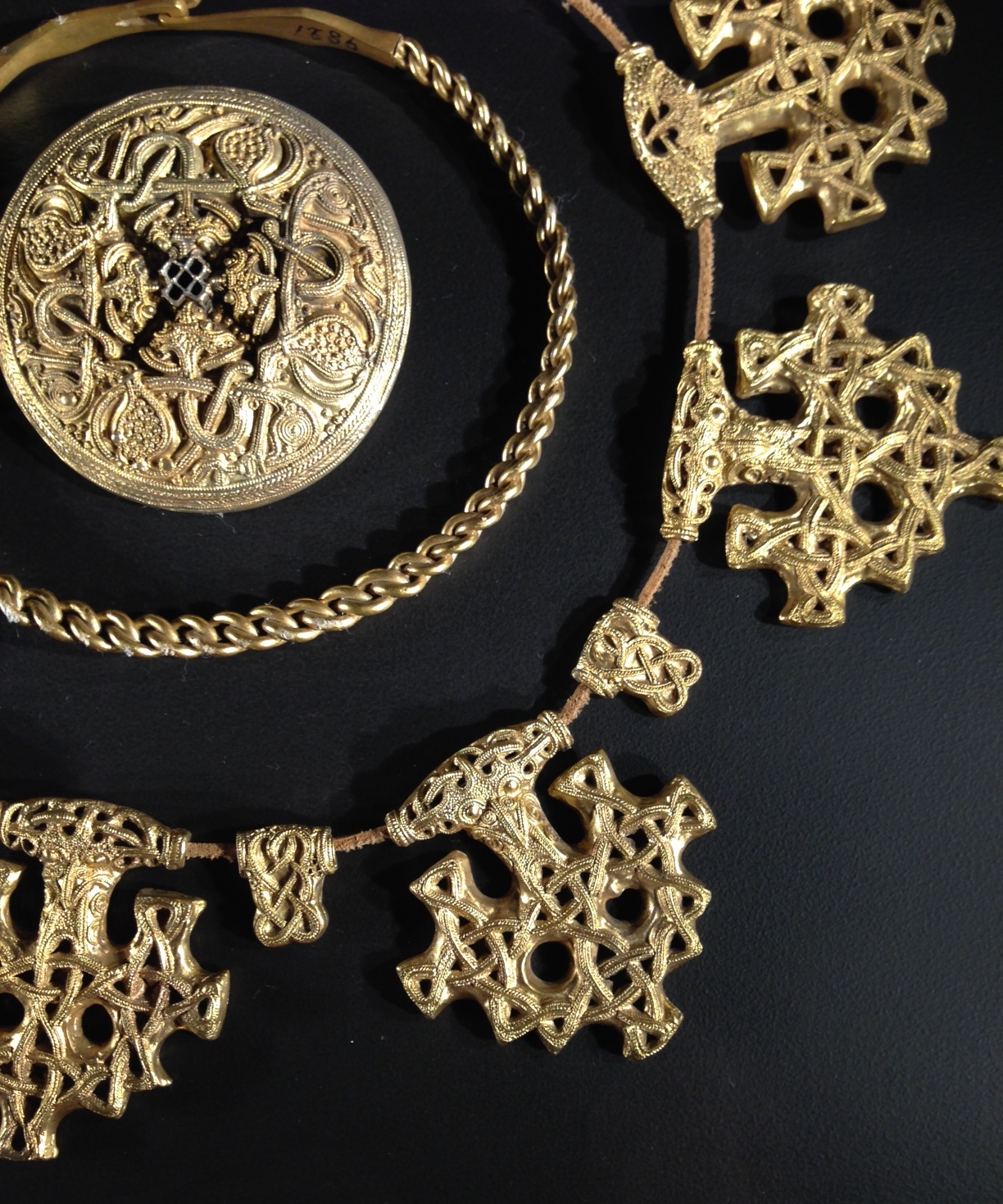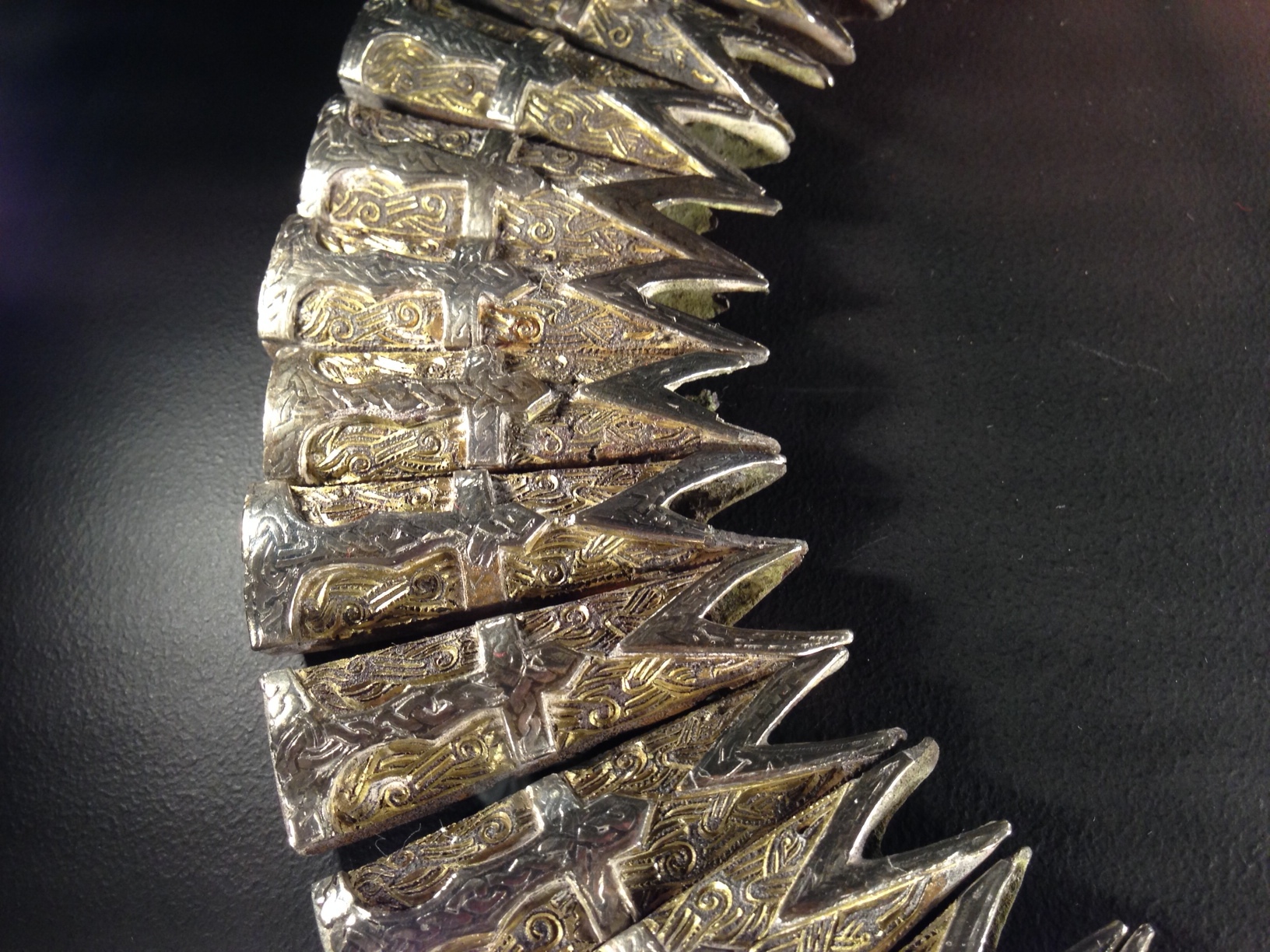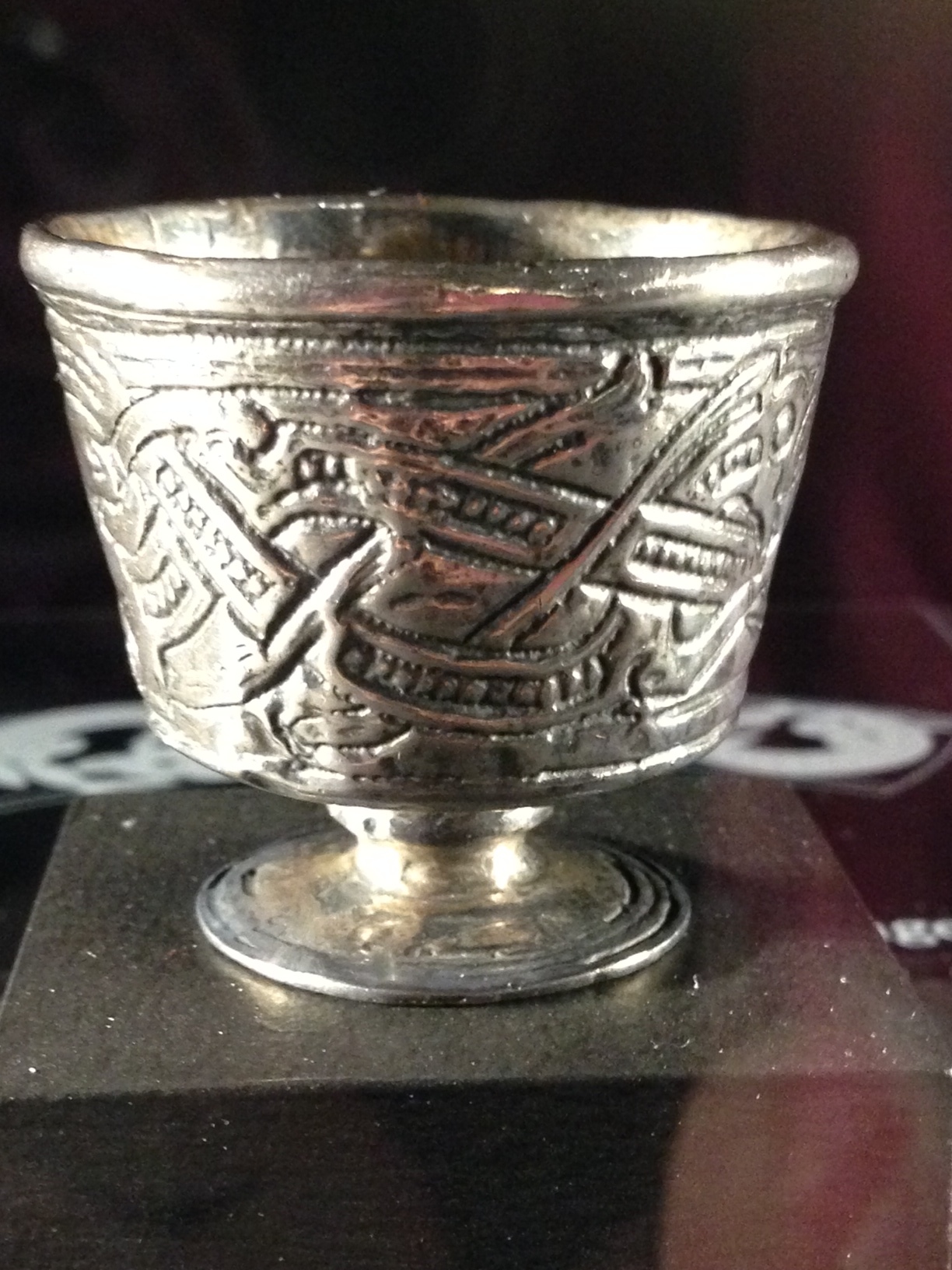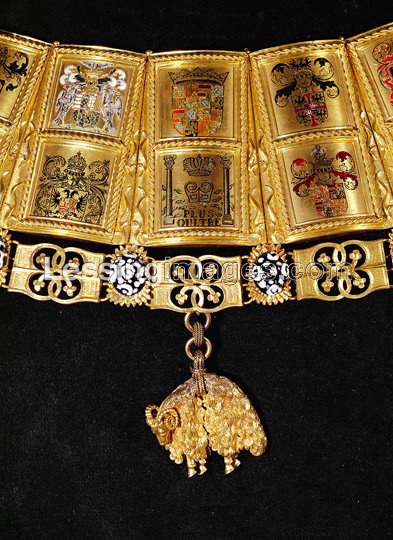
Took a couple of days in Sydney, ostensibly to go check out the ‘Vikings Beyond the Legend’ exhibition currently being hosted at the Australian Maritime Museum, but happily also to catch up with a handful of friends whom I didn’t even know were in Sydney for these days! Fortuitous turn of events, indeed.
Anyway, the Viking exhibition. I was very much looking forward to it as my knowledge of viking history is somewhat rudimentary and I was hoping this would prove an opportunity to, you know… learn some ‘stuff’. The artefacts on display were amazing… there were some remarkably well preserved items showing a wide range of decorative arts from throughout the period, from jewellery (broaches, necklaces, bangles, beads, etc.,) to swords, daggers, shield bosses, combs, and other domestic items of anter and bone.


However, I was really disappointed with the information labelling each item. Objects were listed by their type, material, geographical location and NO indicators of what time frame they came from. Bizarre. I really don’t know what the curatorial team were thinking… apparently the entire exhibit came ‘as is’ from Sweden, having been designed, staged, labelled and presented as you see it everywhere it goes. So they have given each item a blurb that reads what the item is, what the item is made from, and where the item is found, but no information on what period the item originates from?! Seems, the introduction info stating that the Norsemen viking era ranged from the 8th -11th centuries is sufficient for most punters. So if you’re a history student, a bit of a research buff or a re-enactor who might want more information… you’ll kind of have to treat this exhibit like Wikipedia – a jumping off point to go exploring for more information on your own time.


The other weird thing I found odd about the exhibit (and I don’t want to sound like I did not enjoy it – because I did, the items were simply beautiful), was that they didn’t seem to know who their audience was. Several items were there very much designed to attract the attention of children – display on Norse mythology and viking boat building, for example were very much designed for school aged children with interactive computer touchscreens spoon feeding the kids with some history and culture. But then other displays had information written on backlit horizontal surfaces at waist height behind an artefact that anyone less than 5′ tall wouldn’t have a hope in hell of trying to read. Many of the information panels were at coffee table height, again aimed at kids, which meant you walked through the whole thing looking down, and other items were arranged in a free form manner – no obvious or direct ‘flow of traffic’ which visitors could follow to ensure they saw all the items on display. Whole thing felt like the curatorial staff were trying to hard to do something different and basically threw out all the tried and true exhibition practices that had stood the test of time. Bit annoying.
 These two images were taken from Överhogdal tapestries, (no portion of the actual Överhogdal tapestries were accompanying this particular exhibit – the images were included to demonstrate the richness and vividness of Norse textiles and decorative arts), and they depict the destruction of Ragnarök, effectively the Norse version of the apocalypse. I snapped some pics of them as they may provide interesting designs that could be adapted for embroidery projects down the track.
These two images were taken from Överhogdal tapestries, (no portion of the actual Överhogdal tapestries were accompanying this particular exhibit – the images were included to demonstrate the richness and vividness of Norse textiles and decorative arts), and they depict the destruction of Ragnarök, effectively the Norse version of the apocalypse. I snapped some pics of them as they may provide interesting designs that could be adapted for embroidery projects down the track.

 I was really hoping there would be plenty of information about the viking propensity for beads. I have bought myself some tortoise broaches at Pennsic War earlier this year and have been wanting to start collecting some beads to go with them – but literally didn’t know where to start, so was glad to see that there were so many sets of beads on display at this exhibition. It think these collections give a good feel for the types of beads that Norse women have have worn. However, once again the weird arse exhibition practices have deserted us, and the labels on the various strings of beads came with no information regarding the possible wealth or rank of their potential owners, nor any indication of the time frames they most likely derived from… So, they could have been daily wear for the middle class or ceremonial wear for the aristocracy, and somewhere from the 8thC to 11thC or anywhere in between. More research required.
I was really hoping there would be plenty of information about the viking propensity for beads. I have bought myself some tortoise broaches at Pennsic War earlier this year and have been wanting to start collecting some beads to go with them – but literally didn’t know where to start, so was glad to see that there were so many sets of beads on display at this exhibition. It think these collections give a good feel for the types of beads that Norse women have have worn. However, once again the weird arse exhibition practices have deserted us, and the labels on the various strings of beads came with no information regarding the possible wealth or rank of their potential owners, nor any indication of the time frames they most likely derived from… So, they could have been daily wear for the middle class or ceremonial wear for the aristocracy, and somewhere from the 8thC to 11thC or anywhere in between. More research required.




The broaches they had on display were pretty amazing. There were several sets of tortoise broaches, animal head broaches and these enormous box broaches. They must have weighed a tonne, I can’t imagine wearing them … they were about 3″ across, 1′ high and made of solid iron or bronze. I imagine hanging those of the front of your garment would not have been kind to the bustline over time, especially when age and gravity are already not exactly your friends in that department.

 This thing (above) is a broach and button and looking at it on the screen right now – it’s showing up about actual size. Again, one helluva chunky bit of bling to be wearing about. Might have been nice to have some of the weights of these actual items listed in with the descriptions, but seeing that they weren’t even accompanied by estimated time periods, sigh… further information like the weight of the item is just wishful thinking.
This thing (above) is a broach and button and looking at it on the screen right now – it’s showing up about actual size. Again, one helluva chunky bit of bling to be wearing about. Might have been nice to have some of the weights of these actual items listed in with the descriptions, but seeing that they weren’t even accompanied by estimated time periods, sigh… further information like the weight of the item is just wishful thinking. This gorgeous little cup is about the size of a modern shot glass. It has a Jellinge style zoomorphic design engraved/carved into it and was stunningly well preserved for something that is potentially 800-1200 years old (so vague!). I wish I had been able to get closer to it (or that there was decent photos of it in the catalogue) as I think I’d like to have a go at making one of these.
This gorgeous little cup is about the size of a modern shot glass. It has a Jellinge style zoomorphic design engraved/carved into it and was stunningly well preserved for something that is potentially 800-1200 years old (so vague!). I wish I had been able to get closer to it (or that there was decent photos of it in the catalogue) as I think I’d like to have a go at making one of these.

 By the time we got to the end of the exhibit I was desperately wanting to see the catalogue to discover if that be where all the missing information that I desperately wanted to see, was lurking. But, no such luck.
By the time we got to the end of the exhibit I was desperately wanting to see the catalogue to discover if that be where all the missing information that I desperately wanted to see, was lurking. But, no such luck.
The Director of the exhibition, Gunnar Andersson, was also the editor/author of the catalogue and yet again, actual dates of the artefacts were deemed not necessary! The photography in the catalogue was a bit ho-hum… so, I didn’t end up buying a copy, which is a bit unusual for me. Ordinarily exhibition catalogues are the ducks nuts – full of tidbits of information that are hard to come by on the internet or only found by digging around in wordy and boring journal articles. But not so much on this occasion!
All up I am glad I took the trouble to see the exhibition, and given it is not coming to BrisVegas, the trip to Sydney was well worth it* – some of the items on display were simply magnificent to view firsthand. However, I was rather disappointed that the curatorial ‘vision’ for the exhibition, felt like it was trying just a little too hard to be different and didn’t seem to be appropriately aimed at any particular audience – bit too grown up for the kids; yet lacking in suitable referencing for serious scholars.
*not to mention the unexpected bonus Ansell Adams exhibition
that was also on at the Maritime Museum while we were there.

































